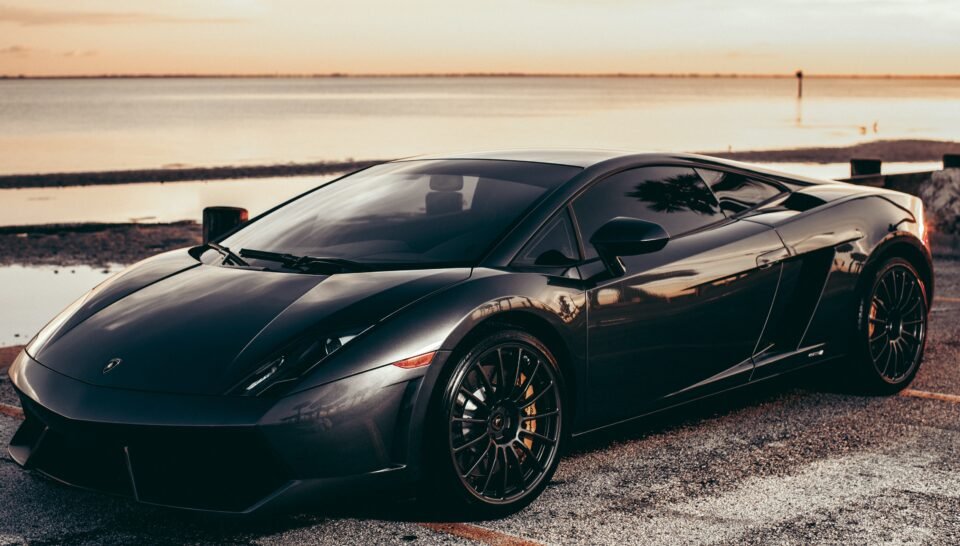The sports car category ranges from models that just have a sporty look or appearance packages to full-on performance-focused sedans, coupes, roadsters, and hatchbacks. They can accelerate slowly and tackle the corners with agility and a sure-footed capability. Most often, the high-performance quotient comes at the cost of a hard and noisy ride and small cargo space. Compromises are not a big deal, as sports cars exist mainly for entertaining the driver. Here, we will discuss a few tips to buy a sports car.
Tips to Buy a Sports Car
With a variety of styles, performance, and cost, you can be confused about how to buy a sports car. Because most of the sports cars are not driven regularly or for a long-distance, fuel economy is not the main factor for many people, though there are a few models that offer a relatively good mileage. Even muscle cars, defined by the huge, powerful engines are becoming popular. For any sports car you want to buy, it is important to check the view. Several studies have shown that sports cars with coupe designs restrict rear visibility. Other styling features could compromise the view to the sides or straight view. If you want to drive slowly on twisty roads, the ability to see other vehicles is important.
The Price
One of the important things to consider when choosing a sports car is its price. Sports cars like the Honda Civic Si, Ford Fiesta ST, Mini Cooper S is priced at mid-$20 and they reach past $60,000 or over for cars like the Porsche 911 and Chevrolet Corvette.
Type of sports car
Sports sedan cars
These are agile cars that are made for high-performance handling. With strong brakes, powerful engines, and attractive exteriors, these cars are a delight to watch. One of the benefits of owning a sports car, like a sports sedan, is its four-door configuration. This configuration allows four or five passengers to travel. Also, it offers a huge cargo space in the trunk. We can say that it is a wolf under a sheep’s skin. BMW sports car is quite popular, but there are several other appealing alternatives too. These are Cadillac, Mercedes-Benz, Infiniti, and Audi. Sizes vary, from models like the Subaru WRX to big cars like the BMW M5, Kia Stinger, and Cadillac CTS-V.

Roadsters
By description, a roadster is a two-seat sports car. It comes with a retractable, removable, and convertible top. Often, these are highly entertaining to drive. Some of the convertibles have a “2+2” seating arrangement. It offers a back seat best suited for occasional purposes by kids.
Coupes
Two-door coupes have a swept-back rear styling. It is lower in height than other equivalent sedans. The coupe design cars range from fixed-roof two-and four seats to two-door versions that exist as sports sedans or two-door convertibles. It includes iconic cars like the Ford Mustang and Chevrolet Corvette. Because of the short wheelbase and sweeping body lines, sport coupes sports cars generally offer compromised rear accommodations, provided they have any.
Hatchbacks
The hatchback design brings built-in practicality. It comes with a large rear liftgate and a folding near the seatback to offer cargo-toting versatility. Often, sporty hatchbacks are less expensive. “Hot hatches” have been popular in Europe. These are a combination of entertaining driving dynamics and flexibility. Some of the good examples of hatchback sports cars are Mini Cooper S and Volkswagen GTI.
Other tips to buy a sports car include its features. Have a look at the engines and the fuel economy of the car. The powertrain, i.e. the combo of transmission and engine is an important consideration in sports cars. Because power delivery plays a significant role in a fun-to-drive equation. However, keep in mind that it is not mandatory for every sports car will have a big engine to produce too much fun.
A light, small sports car like the Ford Focus ST can offer similar acceleration from a modestly sized engine as a heavier, larger car with a huge V8. Cars with small engines often provide better handling because front wheels have less weight.
Most sports cars come with a high-revving engine that may attain a horsepower boost from a supercharger or turbocharger that forces more air inside the engine than a “natural engine” can draw by itself. The more air is available to mix with the fuel, the more power the car engine can produce.
Enthusiasts while buying their dream car prefer a manual transmission as a stick shift provides the driver more involvement and control. It helps in avoiding road accidents caused by bad drivers. However, there are ways to report bad drivers but it’s always better to take precautions ahead. Modern-day automatic transmissions have become engaging, often with the “sports” mode with aggressive shifting under the heavy acceleration and provision for manual gear selection through the paddles or shifter.
Some of the sports cars utilize a kind of automatic transmission known as a dual-clutch, which uses internals as same as manual transmission and offers the same directly connected feeling. Sports cars that have dual-clutch transmissions are much faster and fuel-efficient when compared to those with manuals. These transmissions generally accelerate the engine to the right speed during downshifts, dropping weight transfer which can result in loss of traction. Brands like Porsche, Audi, and Volkswagen make great use of dual-clutch transmissions in their sports cars.
Handling
Apart from the sound qualities and power delivery, another important thing for a fun car is its handling: how it reacts to the driver and road. Quick steering response, communicative steering feedback, and minimal body lean are the main ingredients that differentiate poseur from a real sports car. These qualities do not have anything to do with the number of doors, styles, or the size of an engine. It just takes more than a simple test drive to check if the handling meets your demands.

Drive wheels
According to conventional wisdom, the best sports car must have a rear-wheel drive. Rear-wheel-drive cars have a better weight distribution and excellent directional response. Front-wheel drive comes with its own limitations in a sports car, when accelerating out of a corner, front-wheel-drive cars tend to move weight from the front wheel, causing a spin. A mechanical restricted slip controls it. Despite the restrictions, there are a lot of front-wheel-drive sports cars that are fun to drive like the Mini Cooper S, Volkswagen GTI, and Honda Civic Type R.
There are many sports cars, like the Subaru Impreza WRX and Audi S4 comes with all-wheel drive. These cars provide superior traction to the front-and-rear drive cars. The grip these cars have on the road is just impressive. They offer better traction in bad weather conditions.
Tires
Some sports cars come with ultra-high-performance summer tires rather than the all-season tires generally found on most of the other cars. These tires are known for increased grip and handling response on both dry and wet roads. As their name indicates, the tires are not made for winter use. They offer little traction on ice and snow too. These tires get damaged fast and can be costly to replace. These tires allow you to extract the best possible grip and handling from your sports car. If your car comes with all-seasons, a set of high-quality summer tires is an inexpensive way to enhance your car’s handling in the future.

